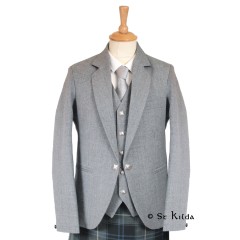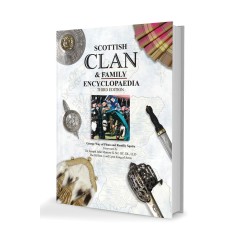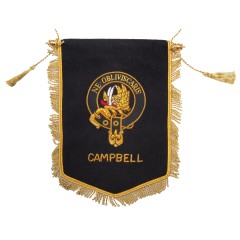-
Kilts
- Jackets
-
Sporrans
Dress Sporrans are the most formal and eye-catching type of civilian sporra..The trusty 'all-rounder': not as informal as the Day Sporran, not as formal..The Day Sporran is a trusty, durable everyday accessory for your Highlandwe..Here you'll find quality sporran accessories and spares. Spruce up your out..
-
Women
Whether you’re heading out for a brisk evening walk or attending a sophist..Crafted with meticulous attention to detail, our waistcoat will feature yo..St Kilda’s Tweed blazers and waistcoats are meticulously handcrafted in Sc..Looking for a practical bag that also celebrates your Scottish heritage? S..
-
Accessories
Here you will find buttons and swatches. We recommend swatches as the best..Here you will find the essential Hangers, Bags and Carriers for storing and..
-
Gifts
Celtic artists from Scotland and Ireland have left a legacy which has endu..
- Clan
-
Clearance
No waiting - all these hand-made sporrans are made up and ready to go. All ..
Crest Meaning: Elphinstone

The Elphinstone crest is a lady from the waist up, richly dressed in red holding a tower and a laurel.
Laurel the traditional symbol of victory and triumph. According to James Coats’ 1725 New Dictionary of Heraldry a tower represents ‘constancy, magnanimity and generosity of men, who freely expose their bodies for the defence of their country. Sometimes given to those who has shown bravery in taking strongholds’ (p.333-4). It may be a reference to Alexander 1st Lord Elphinstone, who was keeper for some time of Stirling Castle on behalf of the Crown. He also built the new Tower of Elphinstone at Dunmore, although the crest did not emerge until the time of the third or fourth lord.
The crest of the seal of the 3rd Lord Elphinstone in 1564 was a sword ‘bendways’ (ie at a 45 degree angle), and around this time it was sometimes shown with a hard about to grasp it, or perhaps having dropped it (R.R. Stoddart, Scottish Arms being a Collection of Armorial Bearings 1370-1678, p.168). The current crest appears on a seal of Alexander Fourth Lord Elphinstone, and is attached to a charter of 1602 (Willam Rae MacDonald, Scottish Armorial Seals, 1904, 106).
The crest is described in Nisbet’s 1722 System of Heraldry as ‘a lady from the middle richly attired, holding a castle in her right hand, and in her left a branch of laurel, with the motto, _Cause Ca_used it’. Sir George MacKenzie’s earlier 1680s manuscript ‘Families of Scotland’ describes the crest in the same way, although the motto as just ‘Caus Causit’.
MKP 29 September 2023





















-240x240w.jpg)

















































